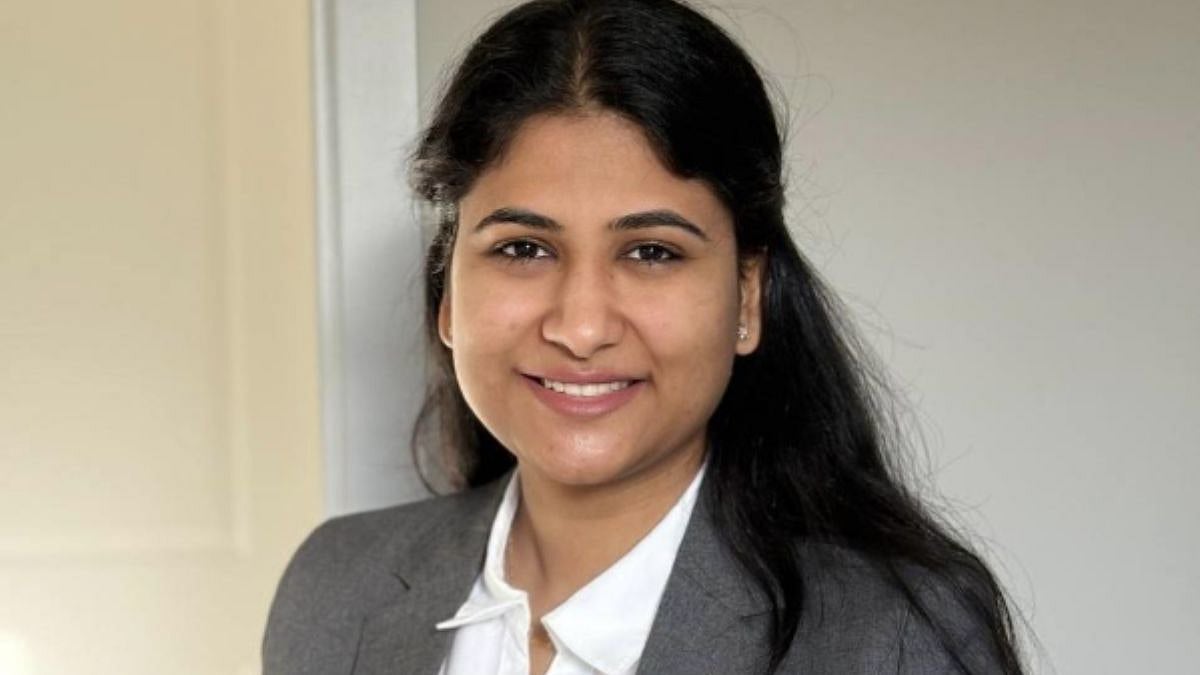It's a key component of new-age security to develop new technologies for detection. As worldwide arising instabilities, forensic science extends beyond solving crimes: a significant role of forensic science is border security and early biohazard detection. It's why India announced a new investment in forensic science in June 2025, both in research and in real-life application. The Indian government is going to invest a total of ₹2,080 crore in establishing seven new forensic science laboratories in several states and creating nine new campuses of the National Forensic Science University. Dr. Himali Upadhyay is active at the cutting edge of these advances as she's a patent holder of new, more accurate, and efficient methods to synthesise explosive compounds and is working on extending her method to environmental security.
"One of forensic science's principal tasks is to detect deleterious substances,” explains Upadhyay Himali. “No method of detecting substances is, however, best suited to do so: we're always searching for methods which will do the job quicker and more precisely and which will allow us to detect small amounts of target substances within a minimal time span.”
This is exactly the issue that the method developed by Dr. Himali Upadhyay is aiming to solve. In her PhD research, she developed a detection method based on the recent advances in supramolecular chemistry, a branch of chemistry that explores complex molecular structures and their interactions. Supramolecules are complex structures formed by assembling smaller molecules together. Unlike common chemical compounds, the molecules within them are connected not through chemical bonds but through weaker forces such as hydrogen bonding or electrostatic interactions. Supramolecules can be designed in a way that allows them to selectively interact with target substances. Dr. Himali Upadhyay designed new supramolecules that are able to recognise specific chemical signatures typical of explosive materials: when the target substance is present, they bind to it, producing a chemical signal that indicates its detection.
In comparison to other methods, supramolecular detection allows for more rapid and precise on-site detection, which can play a crucial role in crime scene analysis and ensuring border security. The results of the research were published in several scientific journals, such as the International Journal for Research in Applied Science & Engineering, the Journal of Fluorescence, and Current Organic Chemistry. The publications describe experimental and computational studies on several types of supramolecular sensors explicitly engineered to bind to chemical groups found in explosive compounds. The method demonstrated detection limits as low as 0.2-0.3 micromolar, which means it can detect even small amounts of explosive material. Along with high selectivity of the method, it creates a potential for it to be used for faster and more reliable on-site detection.
The research was also presented at multiple conferences in India and the USA, including the IASR International Conference on Forensic Science in 2022, which is one of the most significant global events in the world of forensic science research, organised by the International Association of Scientists and Researchers. In May 2025, Dr. Himali Upadhyay presented a paper at the FINDS conference, which is funded by the U.S. Army and focuses on applying advanced technologies for national security. This is a vivid illustration of the fact that the line of research pursued by Dr. Himali Upadhyay has the potential to find practical implementations in the near future.
However, the potential of the novel detection methods goes far beyond explosive detection, as national security includes a much wider range of tasks for which the method can be applied. For instance, for her current project at Florida International University, Himali Upadhyay works on developing a method of detecting organic compounds that can play a crucial role in environmental protection.
“While on the surface level explosive detections and preventing the spread of invasive species can seem to be mostly unrelated topics, however, there is a similar task at their core: in both cases, we need an effective detection method to prevent danger, and the recent advancements in chemistry provide such a method,” comments Himali Upadhyay.
The example of such use is her research on defining the odour profile of the worst invasive alien species listed by International Union for Conservation of Nature, the giant African snail. It was originally discovered in East Africa, but now it has invaded over 50 countries on a number of continents, including Europe and America. It is capable of adapting and rapidly reproducing and outstripping local species. It can consume over 500 plant species, including rice, maize, wheat, and beans. It damages crops on a mass scale. In contrast, local plant species destruction of a particular region leads to a loss of biodiversity and a negative ecological footprint.
The project that is being developed by Dr. Himali Upadhyay and her team at Florida International University recently received federal funding from the United States Department of Agriculture. Researching the odour profile of the snail by analysing volatile organic compounds of its mucus.
“Volatile organic compounds can be likened to the chemical fingerprints of living beings because each living organism releases a distinct group of such compounds, which readily vaporise and diffuse through the atmosphere. In our work, we are concerned with detecting VOCs unique to the giant African snail as its chemical fingerprint and consequently a good biological indicator of its presence,” says Dr. Himali Upadhyay.
The identification of these volatile organic compounds will enable researchers to educate dogs to sniff out these compounds, ultimately producing a quick, accurate, and consistent method to determine if there is an infestation of this invasive species and control its spread.
These identification procedures have never been applied previously to invasive species detection, though their applications could go beyond African snail infestation control in the US. In the near future, the method may extend into control of other invasive species, including Indian ecosystems-threatening ones like a red-eared slider turtle or an American bullfrog. Native to North America at present, the American bullfrog invaded Andaman and Nicobar Islands and competes with native frogs like the Andaman frog and feeds on smaller species and thus becomes a threat to local biodiversity. In a similar manner, a red-eared slider turtle introduced by humans originally as a pet species became invasive in Indian urban lake and wetland regions and stands to outcompete local turtle species like the Indian black turtle. Both these species are very adaptable and hard to detect and control and thus the development of new procedures for their identification becomes part of environmental protection.
“It was always important for me to see my research being applied to solving real-world problems, whether it is crime scene investigation, national security, or environmental protection,” concludes Dr. Himali Upadhyay. “This research is just one example of how leading-edge chemistry research can span across different areas, helping to solve a variety of practical challenges.”
While the world faces numerous and deeply interconnected issues, such innovations as Dr. Upadhyay's have not only a scholarly significance, but indeed have very real-world uses as solutions to security issues. India's continued investment in high-end forensic science guarantees us other research in this field will emerge, and eventually, boost security and sustainability in India and globally.









